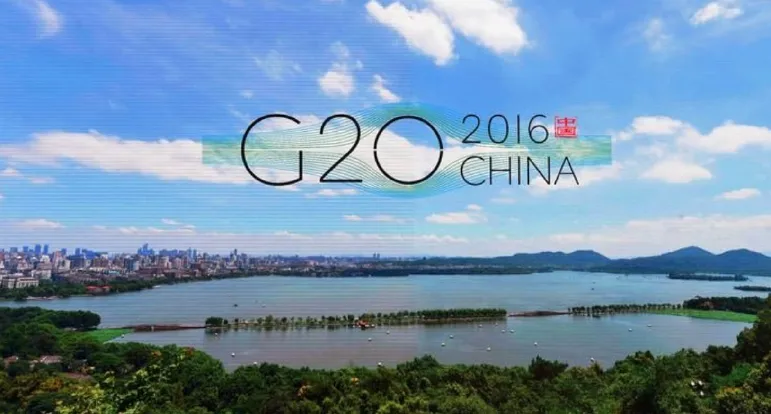G20 Hangzhou Summit: Setup of A Spanning Bridge
G20 Hangzhou Summit: Setup of A Spanning Bridge

During 4—5 September, Hangzhou beside West Lake ushered in the 11th summit of G20 heads. The theme of the Summit is to “build an innovative, vigorous, inclusive and linked global economy”.
What is most impressive in the summit is the bridge-like G20 logo described with 20 lines. The lines of the bridge is similar in form of optical fbers, implying interconnection in the information era, and its archway accords with “O” in G20, meaning the spirit of solidarity and cooperation of all countries.
Currently, the global economy recovers with diffculty, and there is increase but no decrease in risks such as low growth, cheap money and poor demand as well as high unemployment, debt and asset bubble. Although all countries play all their cards to promote economic growth, it is far from easy to utterly solve a dilemma, and go across economic downturn. The highest priority of G20 Hangzhou Summit is just to put up a spanning bridge.
Does this bridge relieve obstacles in current global economy and trade channel? Does it step over gaps between developed and developing countries? The world people are looking forward to China's actions. President Xi said in the Summit that “we'll call on G20 to become an Action Team rather than an idle talk club”.
With the end of the Summit, this bridge has started to bear the world's expectation to G20, that is, let G20 become a bridge in global economic growth, cooperation of international community,and win-win oriented to the future.
Development: China's Plan for global economic governance
China is the second economy in the world, and also is the largest developing country. There are the most developing countries in number invited to attend the G20 Hangzhou Summit, and the development is placed in the core of global macropolicy framework for the frst time.
New information from China's economy
As a host, China's global governance plan received much concern in G20 Hangzhou Summit, while G20 also became an important window for all parties to observe China's economy.
Seeking: The direction of future global economy
In 1999, the fnance ministers and central bank chiefs of the G20 held the frst unoffcial meeting, and since then, the crisis countermeasure mechanism was thus born. After 17 years, the problems such as low economic growth and poor economic structure are still not cracked; the trade protectionism reappears, and the global economy needs a new power.
- 环球市场信息导报的其它文章
- 《屠夫十字镇》:梦醒了仍有路可走
- 2016北京CBD商务节:梳理与展望
- Leading development of high-grade, precision and advanced industries in Capital economy, and building the Innovative CBD—Interpretation of the 13th Five Year Plan for CBD functional Area
- 2016 Beijing CBD Business Festival: Summary and Outlook
- 我们走进《狮子王》的后台,想找出它长演不衰的秘密
- 崔健:摇滚不重要重要的是自由创作

